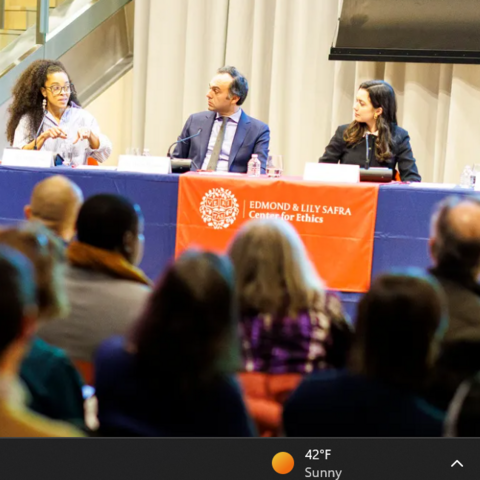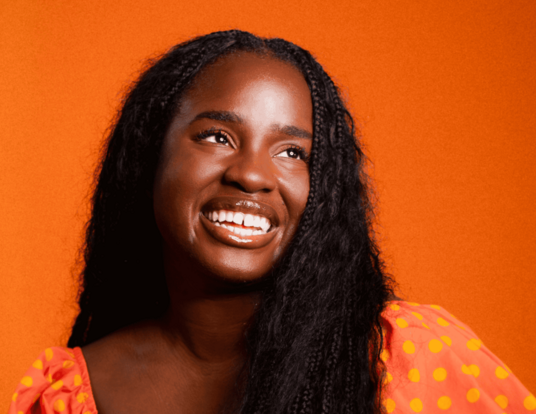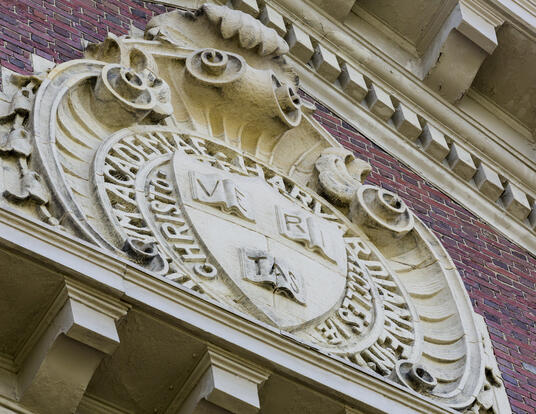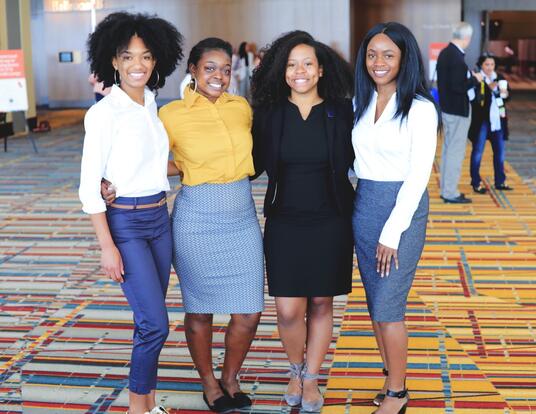Turning the Tables on COVID—with Help from SHURP
Gabriel Romero-Agosto’s summer research program at Harvard could have been canceled by COVID-19. Instead, the experience helped him become a PhD candidate who studies the virus.
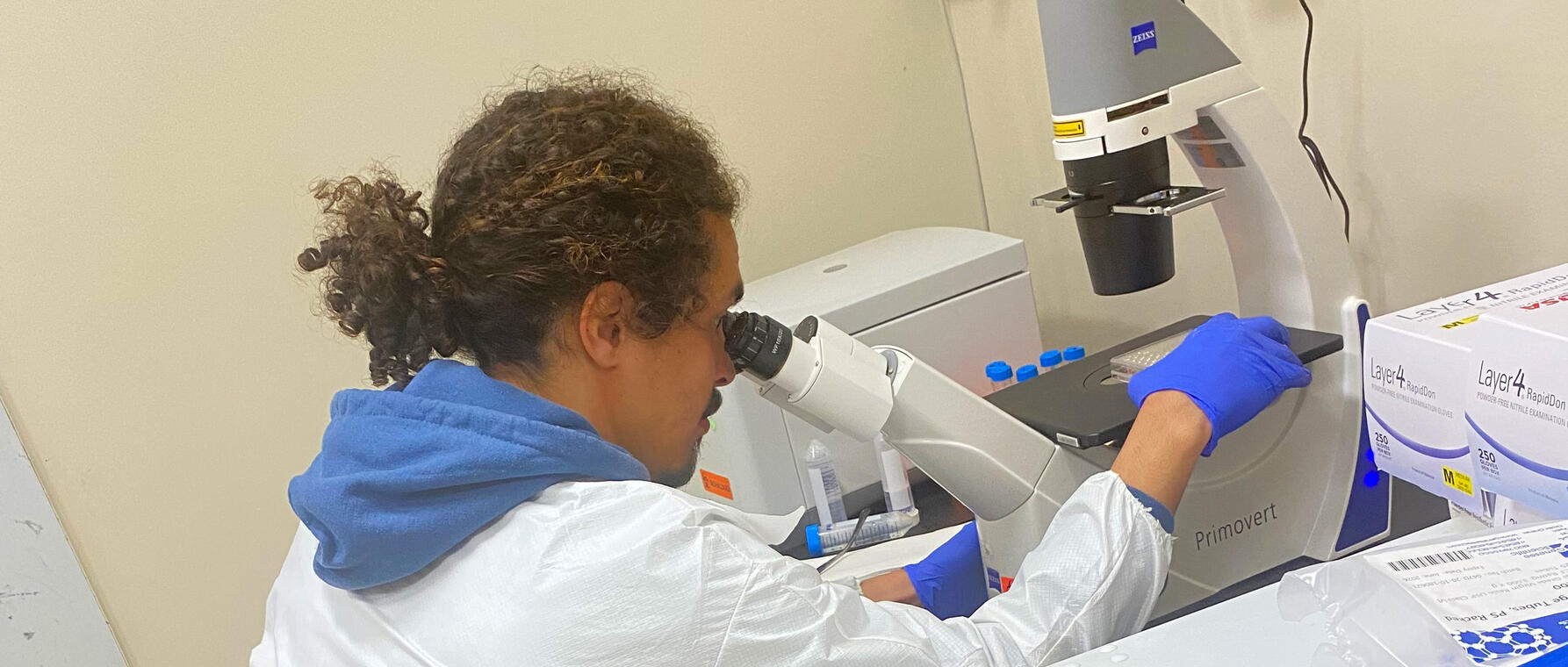
Research at Risk: Since World War II, universities have worked with the federal government to create an innovation ecosystem that has yielded life-changing progress. Now much of that work may be halted as funding is withdrawn. Find out more about the threats to medical, engineering, and scientific research, as well as how Harvard is fighting to preserve this work—and the University's core values.
What happens when the wrench in your plans becomes the plan? Just ask Summer Honors Undergraduate Research Program (SHURP) alumnus Gabriel Romero-Agosto.
After turning down an offer from a summer program at the University of Pennsylvania (Penn), Romero-Agosto was thrilled when he was admitted to SHURP, a competitive ten-week summer research experience at Harvard for undergraduates interested in pursuing graduate study in the biological and biomedical sciences. A college student in Puerto Rico, where he grew up, Romero-Agosto couldn’t wait to conduct research in the University’s world-class labs . . . in the summer of 2020.
“That was when a little-known virus called SARS-CoV-2 started kicking around,” he says. “All my friends who had gotten internships—their programs got canceled. I was very scared SHURP would get canceled too. Thankfully, we ended up doing it virtual.”
Despite working remotely, Romero-Agosto says his SHURP experience played a critical role in shaping his academic and professional path. The time spent poring over research papers and developing skills in statistics and grant writing led him back to the Harvard Kenneth C. Griffin Graduate School of Arts and Sciences (Harvard Griffin GSAS), where he is a PhD candidate in biological and biomedical sciences—and where he studies the virus that nearly derailed his first experience at the University.
Far Out
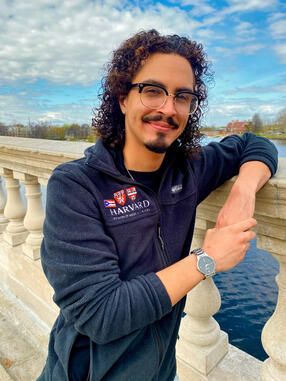
Romero-Agosto knew he wanted to pursue a career in scientific research even before he started college at the University of Puerto Rico Cayey (UPR Cayey). As a first-generation student, though, he didn’t know how. He got his start through RISE (Research Initiative for Scientific Enhancement), a program funded by the National Institutes of Health that prepares students for internships at research institutions on the US mainland. The summer after his freshman year at UPR Cayey, Romero-Agosto interned at Rutgers University, where he was introduced to virology.
“I fell completely in love with it,” he says. “That was the first time I worked with viruses, and now I’m a virologist.”
Another internship followed at the University of Minnesota. While both experiences were valuable, they also exposed him to inequalities in access to high-level scientific research facilities.
“Puerto Rico has labs, but not that many resources—especially compared to institutions on the mainland,” he says. Moreover, the thought of applying to elite institutions like Harvard remained daunting. “I had put up this invisible mental roadblock in my head, telling myself I’d never make it to an Ivy League school,” Romero-Agosto admits. “It seemed too far out there for somebody like me.”
That’s where SHURP came in. Designed for participants who come from a wide range of institutions and backgrounds—including many first-generation undergraduates like Romero-Agosto—SHURP allows students to experience graduate-level work at one of the world’s leading research universities. They conduct full-time, paid research in a Harvard lab under the guidance of faculty and a research mentor.
“Harvard is a teaching institution, so it’s important for it to spread the wealth of knowledge here,” says Xavier Du Maine, assistant director of culture, community, and engagement at Harvard Integrated Life Sciences. “Many students don’t have access to these resources and our faculty. With SHURP, we provide training and support beyond our own student population. And we work with amazing researchers that we otherwise wouldn’t be able to.”
When he heard about SHURP, Romero-Agosto made a leap of faith—turning down admission to the Penn summer program before hearing back from Harvard. He admits to a white-knuckle moment or two while waiting for the letter from SHURP.
“I was panicking,” he laughs. “But eventually, SHURP came through. I was so relieved. We celebrated.”
Then came COVID-19.
I had put up this invisible mental roadblock in my head, telling myself I’d never make it to an Ivy League school. It seemed too far out there for somebody like me.
—Gabriel Romero-Agosto
School for Aspiring Scientists
The pandemic forced SHURP online, leaving Romero-Agosto to conduct his research from his room in Puerto Rico. Still, he found the experience deeply formative.
“It wasn’t ideal. But you kind of have to make the best of it with the resources you have,” he says. “I was matched with Professor Kenneth Kaye’s lab at Brigham and Women’s Hospital in Boston, which works with herpesviruses. That’s actually the type of virus I first worked with at Rutgers, so it felt full circle.”
Without access to a physical lab, Romero-Agosto focused on developing skills that would serve him throughout his career. He joined virtual journal clubs and participated in workshops on R programming—an open-source computer language designed for statistical computing, data analysis, and data visualization—as well as scientific writing. He also spent the summer drafting an application for the National Science Foundation (NSF) Graduate Research Fellowship Program (GRFP), a prestigious and competitive award.
“SHURP turned it into a summer school for aspiring scientists,” he says. “It was intense, but it was worth it. I didn’t get the NSF fellowship that year, but it prepared me for grad school. I applied again my first year at Harvard—and I got it.”
More than the credentials, SHURP gave Romero-Agosto something he hadn’t fully expected: a vision of himself as a scientist.
“It was the first time I ever tried to visualize and write a scientific project proposal,” he says. “I was working alongside one of the leading virologists in the field, contributing novel ideas. I remember thinking, ‘Wow, I can actually do this. I can be in this space.’ That confidence stayed with me.”
After SHURP, Romero-Agosto applied to several PhD programs—including Harvard’s—and got virtual interviews at all of them. “It was hard to get a real sense of the schools through Zoom,” he says. “So I wanted to visit campuses after getting accepted to really see what each place had to offer.”
Romero-Agosto was among a group of admitted students flown to Harvard, a visit he says “changed everything.” “I met other students like me. I realized Harvard wasn’t this monolith. There was community here—enough for me to feel seen.”
Harvard is a teaching institution, so it's important for it to spread the wealth of knowledge here.
—Xavier Du Maine
Assistant Director of Equity, Diversity, Inclusion & Belonging, Harvard Integrated Life Sciences
In addition to meeting other students and faculty, Romero-Agosto’s SHURP experience helped him decide on Harvard. “I saw people I’d met in SHURP events. I remembered the mentors who had supported me,” he says. “That’s what ultimately convinced me to come back.”
Du Maine says that SHURP’s goal is not only to aid in the development of the remarkable young scientists who participate in the program, but also to enable the University to connect with the most talented students from a wide range of backgrounds.
“SHURP is also about the communities and schools participants come from,” he says. “It’s a way to demonstrate to faculty that excellent, amazing students and scientists come from everywhere around the country.”
Ten Times Happier
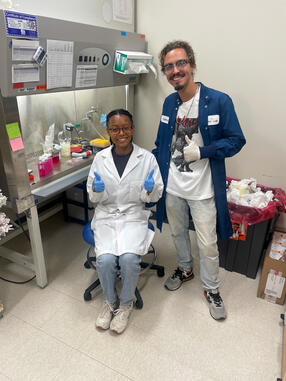
Now a PhD candidate in the biological and biomedical sciences program, Romero-Agosto is once again part of SHURP—this time as a mentor to participant Aminah Coleman, a rising junior from Howard University.
“I reviewed her application as part of the admissions committee, and she immediately stood out,” he says. “She’s young, enthusiastic, and interested in viruses. I knew she’d be a perfect fit for our lab.”
Romero-Agosto paired Coleman with a project studying flaviviruses—viruses like Zika and West Nile that are transmitted by mosquitoes or ticks. Her research focuses on how the RNA structure of a tick-borne virus called Langat changes with temperature shifts between host organisms.
“These viruses are shape-shifters,” he explains. “They adapt depending on whether they’re in a mosquito or a human. Amina’s project is about figuring out how their RNA changes structure to survive those shifts. It’s challenging work—and she’s excelling.”
Mentoring enables Romero-Agosto to develop as a teacher and educator, but his stake in the work is much more personal than that.
“As a first-generation student, I had to figure everything out on my own,” he says. “How to apply, how to leave Puerto Rico, how to survive in a lab, how to keep going when nothing’s working. Without mentors, I wouldn’t have made it. Experiments might be failing for me, but if my student’s experiments are succeeding? That makes me ten times happier.”
SHURP was the first time I ever tried to visualize and write a scientific project proposal. I was working alongside one of the leading virologists in the field, contributing novel ideas. I remember thinking, ‘Wow, I can actually do this. I can be in this space.’
—Gabriel Romero-Agosto
RNA and Resilience
Today, Romero-Agosto’s dissertation research brings him face-to-face with the very virus that nearly upended his SHURP experience five years ago: SARS-CoV-2.
“In the Silvi Rouskin lab, we study RNA structures,” he explains. “SARS-CoV-2 has this fascinating ability to shift its genetic code midstream—something called ‘stimulator-1 programmed ribosomal frameshifting.’ It’s a mechanism largely dictated by RNA structure. That’s what I study now.”
Romero-Agosto’s road from a young first-generation college student in Puerto Rico to a Harvard PhD candidate researching one of the most studied viruses of the twenty-first century hasn’t always been smooth. But he says the adversity he’s encountered has enabled him to develop the kind of resilience it takes to succeed in science—and life.
“There’s always been something trying to knock me off course,” he says. “Hurricane Maria hit right when I started undergrad. Then came the earthquakes. Then the pandemic. Then the funding cuts to science. But people like me—we’re used to surviving. We keep going.”
Programs like SHURP are essential, Romero-Agosto says, to ensure all that hard work and resilience come to fruition.
“Funding for programs like this is always the first to go,” he says. “But if institutions want to bring the most talented students into the sciences, they can’t cut these initiatives—they need to expand them. SHURP changed my life. And now I’m trying to pay that forward.”
Romero-Agosto’s research was funded in part by a T32 grant from the National Institutes of Health (5 T32 GM 141745-3).
Get the Latest Updates
Join Our Newsletter
Subscribe to Colloquy Podcast
Simplecast


